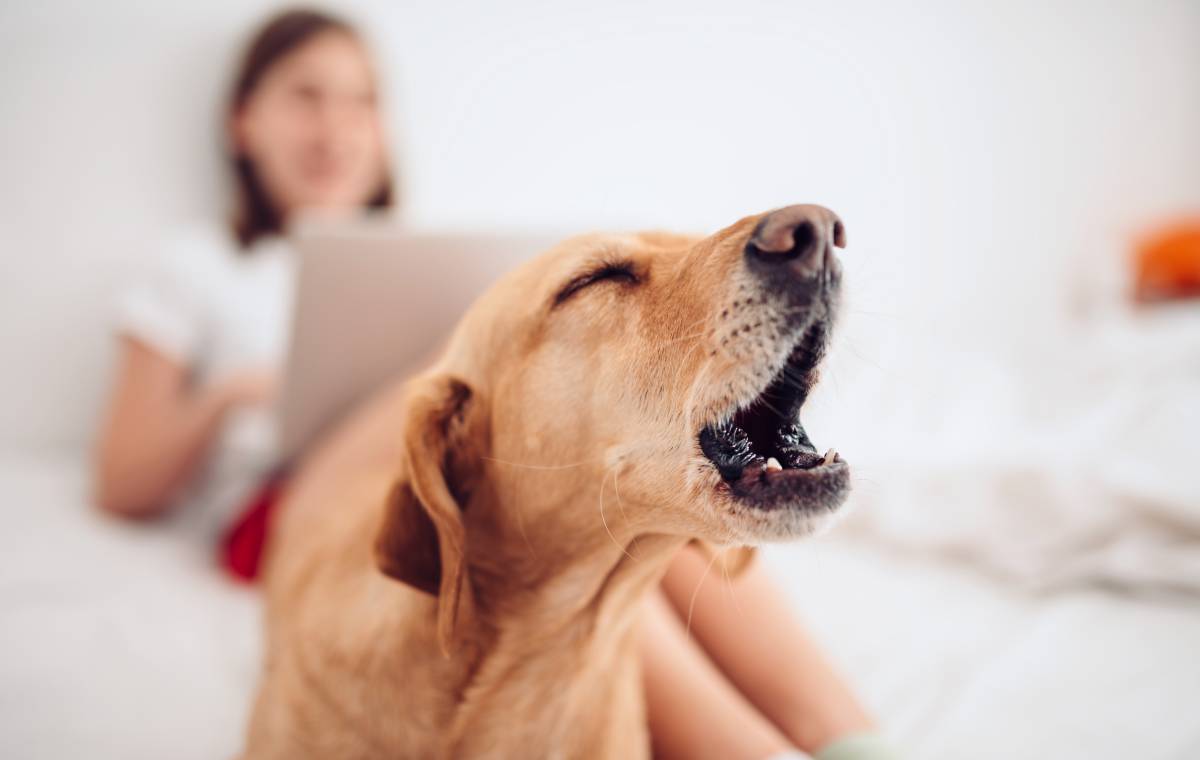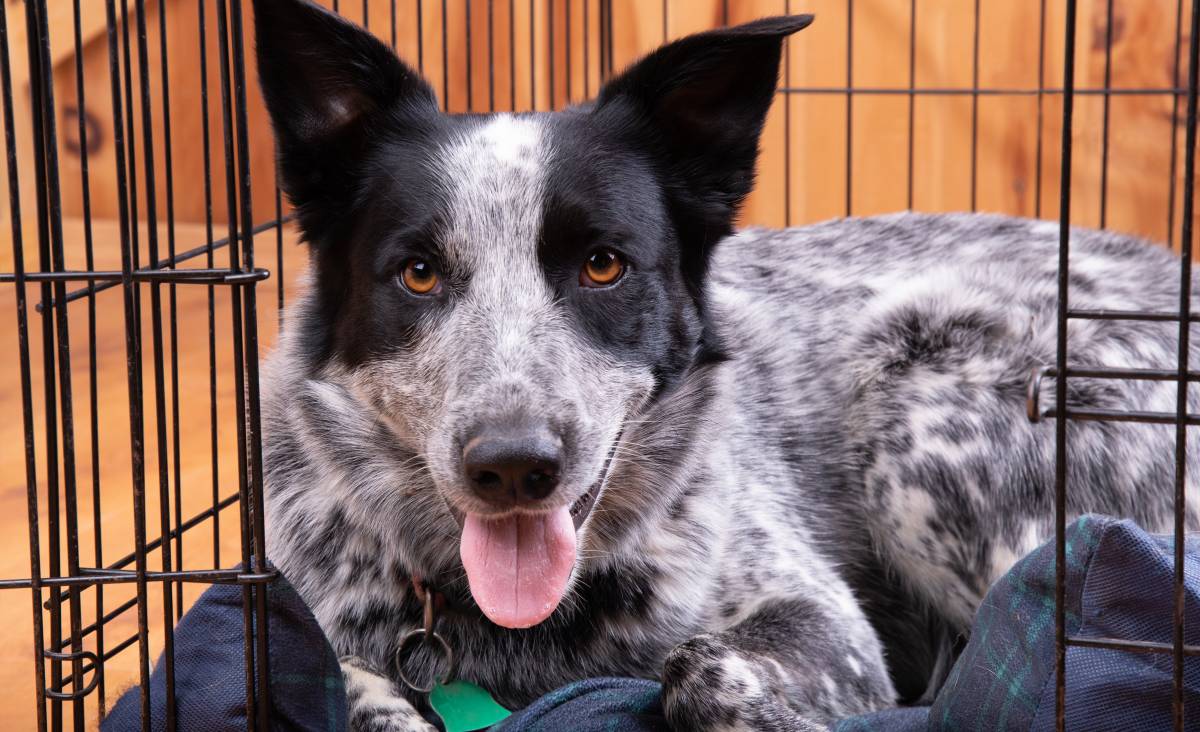- Home/
- Guides/
- Dog Training/
- Potty Training Dogs

A quick guide to potty training your dog
Here are tips to keep in mind when house training your pet.
Consult a dog trainerLast Updated on
Getting a dog at any stage in your life is a blessing in every way. If you adopted a senior or adult dog, congratulations! Having a furry companion and a best friend at whatever age should not matter. Not only are adult dogs a source of comfort, but they can also build a bond with you as quickly as a puppy.
This guide walks you through the dog potty training process, covering the steps to take and tips to keep in mind when house training your pet.
Tools for dog toilet training
The materials for potty training adult male or female dogs do not differ from potty training a puppy. What makes this procedure different is the way you go about it. Before you go on to toilet train your dog, you need to secure the following materials:
- Potty pads and sheets
- Treats
- Dog leash
- Crate
- Pet barriers
- A litter tray
How to potty train your adult dog
Step 1: Build a routine with your dog
You have to understand this is a lifelong partnership with your dog. When a dog enters your life, you enter their life as well. As a dog parent, you must acknowledge that your schedules have to integrate. Think of it as having a shared calendar with your dog.

At the same time, your dog has to unlearn all the habits they have picked up through the years. Older dogs that weren’t housebroken at an early age tend to go as they please, which could send your schedule (and your house) awry.
Keep these tips in mind when building a routine with your dog:
- On average, a dog must head out to do its business at least once every hour. Take your dog outside or to its potty spot during these scheduled times.
- Do your best not to deviate from the schedule. Deviating can result in accidents and leaks around the house.
Step 2: Pick a leak spot
When training a dog to pee outside or inside, identify a spot for them to relieve themselves. Establishing a leak spot can prevent random accidents.
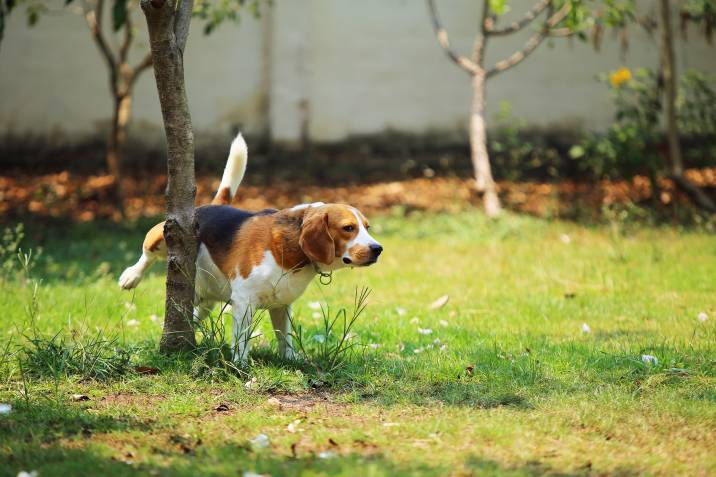
Say a command word whenever your dog does its business. If you want to seal this area into your dog’s memory, you can associate a specific phrase like “go pee” whenever they go take a leak in that spot. This method is called ‘classical conditioning.’
Use a pee pad. If you want to train your dog indoors, you can have them use a pee pad. A pee pad is especially applicable for homes that do not have an outdoor area.
Step 3: Identify your dog’s cues

The best way to speed up the process of toilet training your dog is simple. Make sure you get to know your dog too. Older dogs, in particular, have certain cues they have adopted throughout their lives. These cues indicate when your dog has to go. All you have to do is identify them.
Most common dog cues you can look out for:
- Whining
- Running around in circles
- Feeling socially anxious
- Sniffing around
- Leaving the room
Make sure to take your dog outside as soon as you spot these cues.
Step 4: Leave room for mistakes
You may think that just because your dog is all grown up, their potty habits have been established during their younger years. But on the contrary, that’s not always how it works.
Many adult dogs (especially rescue ones) have lived all their lives outdoors and are undomesticated. As a result, your adult dog may have established their own routine without the need for potty training. So making mistakes may be frequent, especially if your dog lived on the streets early on.
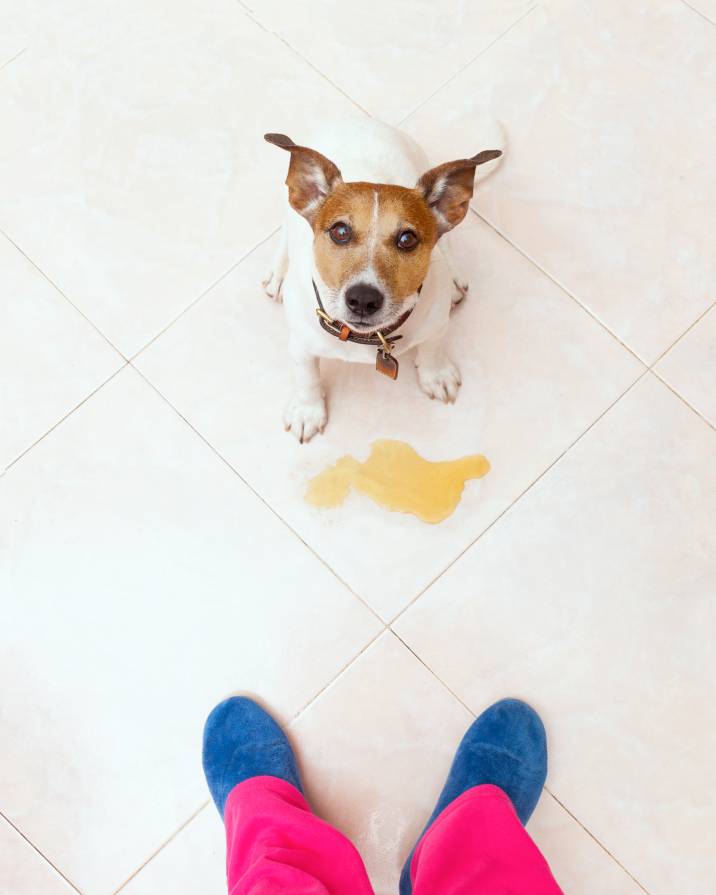
You can make use of two methods to help your dog avoid accidents:
Crate training: Unless your dog has PTSD, you can use the crate method as a response to their den instinct. Dogs usually want a spot to curl up and feel safe. A crate can be a dog’s safe space, especially if they are left unsupervised.
Bell training: Doing the Pavlovian technique is a classic way to toilet train your dog. When bell potty training your dog, simply ring a bell every time you take your dog outside. Your dog will associate the bell sound with potty time and eventually ring it themselves when they need to tinkle. A clever method, isn’t it?
When your dog makes mistakes, let them know without raising your voice. Maintain a well-modulated but stern voice when addressing that they made a mistake. Raising your voice can scare and startle them, and they may end up hiding their accidents from you.
Step 5: Reward your dog for a job well done
Just as you correct mistakes, so should you praise your dog for their good deeds. After your dog has peed in the correct spot, immediately reward them. Do not wait until they enter the home to get the reward. Instant reward is the best way for your dog to recognise they are making progress.

You can also let your dog have some outdoor fun after they relieve themselves. This way, your dog will associate potty training with positive feelings instead of seeing it as a chore.
| Also read: Your Ultimate Guide to Dog Care – Everything you need to know about caring for a dog, from grooming to training |
Easy dog breeds to potty train
These dog breeds are said to be a breeze to train because of their desire for a clean environment, their ease at picking up learnings, and their urge to have treat rewards.
- Border Collie
- German Shepherd
- Labrador Retriever
- Australian Shepherd
- Doberman Pinscher
Keep in mind that it still all boils down to the skill level, age, and learning capability your dog has at its stage in life.
Hardest dogs to potty train
On the other hand, these dog breeds usually require more patience to potty train.
- Bichon Frise
- Dalmatian
- Daschund
- Pomeranian
- Jack Russell Terrier
These dog breeds are usually hard to potty train because they tend to be domineering, stubborn, and inconsistent. But that does not mean these dogs cannot learn. It may just take a bit more time. You can hire a local dog trainer to train your adult dog if doing it yourself proves challenging.
Hiring a dog trainer to help potty train your dog
If your dog is difficult to train or you simply don’t have the spare time, a dog trainer can give you a hand. An expert dog trainer would have handled all types of dogs and know the best method to potty train your adult dog.
FAQs on potty training a dog
Potty training an adult dog may take up to several weeks. To successfully house train your dog, you need to consider their age, skill, and learning capabilities.
You may have heard of the famous adage that goes, “You can’t teach an old dog new tricks.” Fetch, stop, drop, and roll may not be in the cards for older dogs to learn. Still, with persistence, patience, and determination, you can get your dog comfortable to do their business in the proper spot (whether outdoor or indoor).
Yes, it’s possible to train a dog to use a litter box. But this is not ideal for larger dogs, as litter boxes are made for cats and smaller in size. Dogs also don’t have the natural instincts to bury their waste. Therefore, it’ll be harder to train your dog to use a litter box. Still, a litter box can be a helpful indoor potty training tool for some dog breeds.
Potty training an adult dog can be either more or less difficult than training a puppy. Puppies have hyperactive bladders, while adult dogs have more control over their bladders. Some adult dogs have also gone through years of house training. On the other hand, untrained adult dogs may have trouble learning housetraining rules and unlearning bad habits. But with lots of patience and consistency, it’s possible to potty train an adult dog.
Find dog trainers, fast
Find a dog trainer
Related articles

Your ultimate guide to dog care
Read more

Tips for training an older dog
Read more

3 Effective ways to house train a dog
Read more

Reactive dog training tips
Read more

How often should you wash your dog?
Read more

How to groom a long-haired dog
Read more
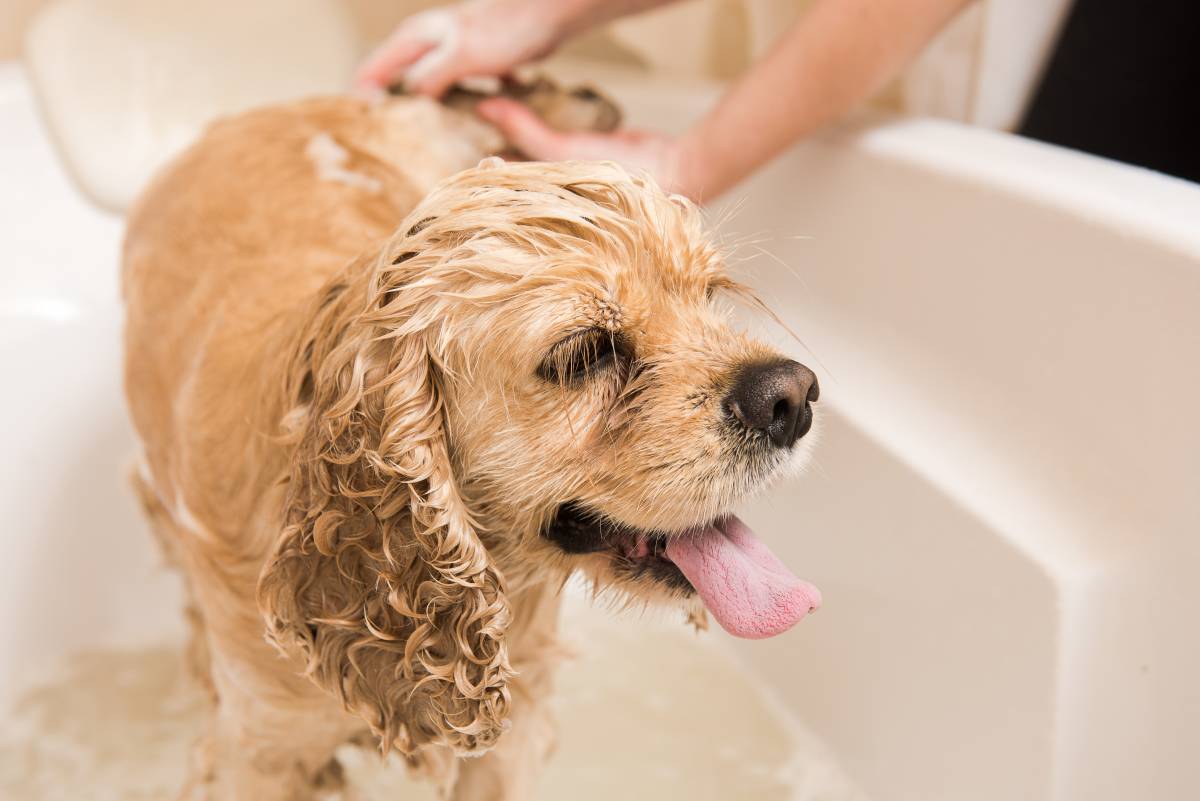
How to groom a dog at home
Read more

How to become a dog trainer
Read more

How to become a dog groomer
Read more

Dog training 101: How to train your dog
Read more
Related price guides

How much does doggy day care cost?
Read more


